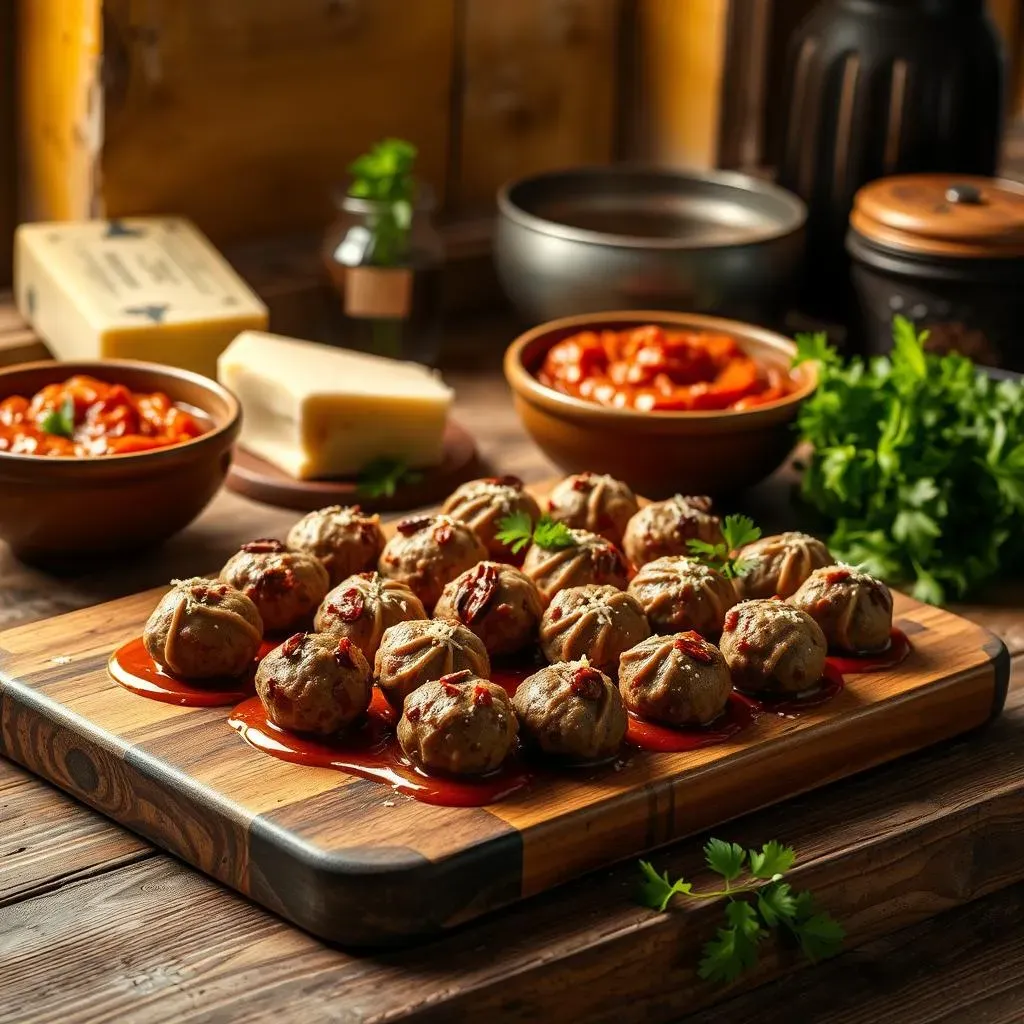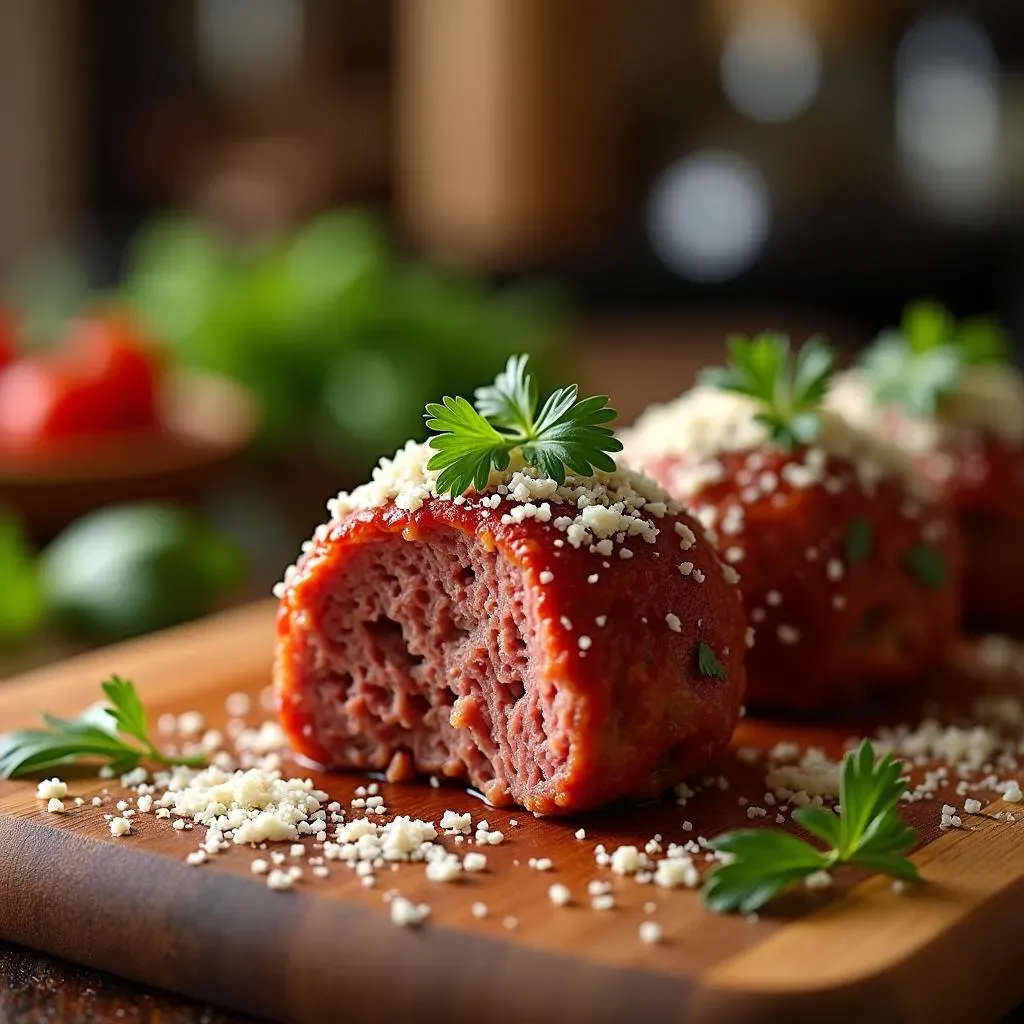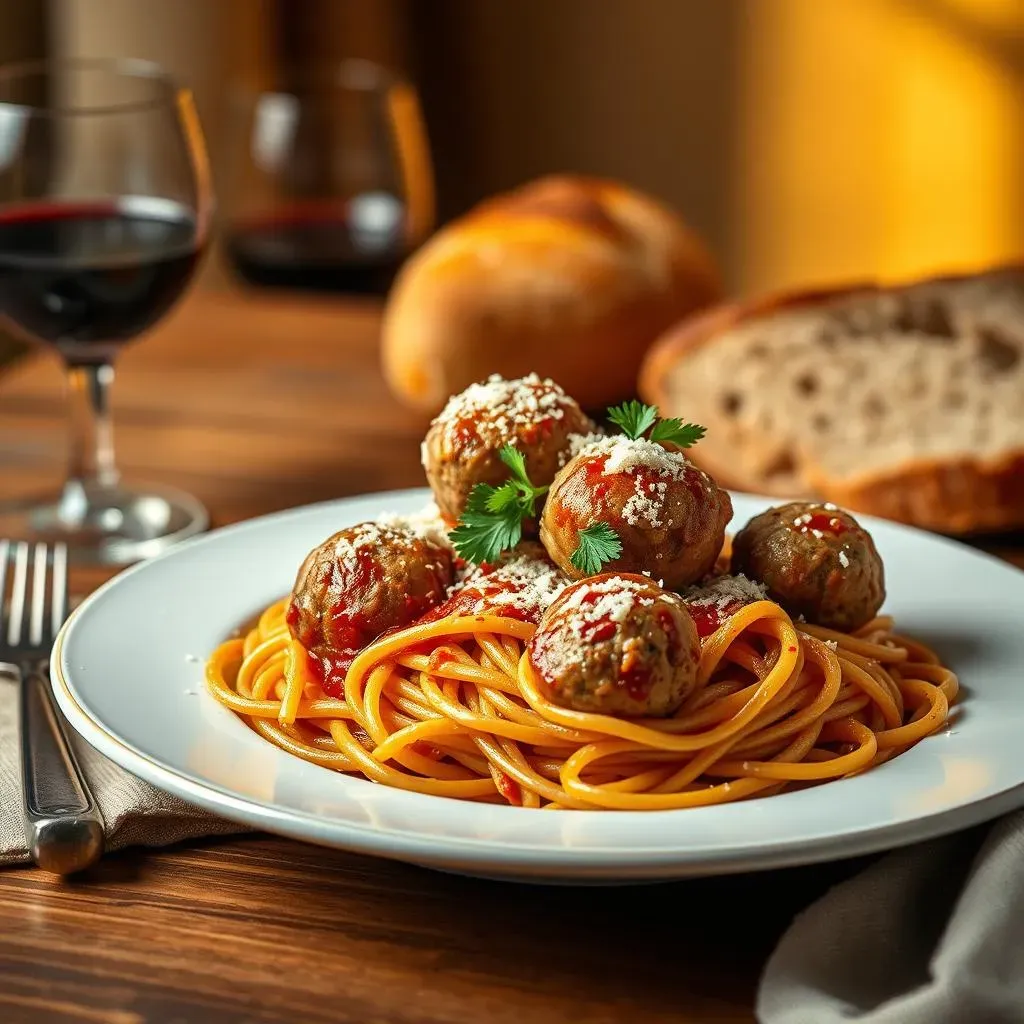Table of Contents
Are you ready to elevate your dinner game? This article is your passport to meatball mastery, specifically focusing on the succulent satisfaction of a perfectly crafted beef meatball. We're diving headfirst into the world of "meatball recipe just beef," exploring everything from the foundational techniques to the creative culinary adventures that await. Forget bland, dry meatballs – we'll unlock the secrets to achieving juicy, flavorful perfection every single time. Get ready to learn the simple steps to creating a classic meatball, discover expert tips and tricks for achieving unparalleled tenderness, and explore a world of delicious ways to serve up your culinary creations. Whether you're a seasoned cook or a kitchen newbie, this comprehensive guide will empower you to create the most delicious beef meatballs you've ever tasted. So, grab your apron and let's get cooking!
Mastering the Perfect Beef Meatball Recipe

Mastering the Perfect Beef Meatball Recipe
The Foundation: Choosing Your Beef
Let's start with the star of the show: the beef! The quality of your ground beef directly impacts the flavor and texture of your meatballs. For the juiciest meatballs, aim for a blend that's around 80/20 lean to fat. This balance ensures moisture and richness without being overly greasy. You can find great options at your local butcher shop, or look for high-quality ground beef at the supermarket – and don’t be afraid to ask questions! A good butcher can guide you towards the perfect cut for your needs. Think of it like this: the fat is the secret ingredient that keeps those meatballs wonderfully moist and tender.
For a leaner option, you can opt for 90/10 ground beef, but be prepared to add a little extra moisture to your meatball mixture. This might involve adding a bit more milk or breadcrumbs to help bind the ingredients and prevent dryness. Remember, even lean beef can produce delicious meatballs if handled correctly! Check out our best ground beef for meatballs guide for more information.
Beef Type | Fat Percentage | Meatball Texture |
|---|---|---|
80/20 | 20% Fat | Juicy and Rich |
90/10 | 10% Fat | Leaner, but still moist |
Building the Perfect Meatball Mixture
Now that you've chosen your beef, let's talk about creating the perfect meatball mixture. This is where you get to personalize your recipe. Beyond the beef, you'll need some binding agents like breadcrumbs and an egg. The breadcrumbs absorb excess moisture, preventing your meatballs from falling apart, and the egg acts as a glue, holding everything together. Don’t forget about the aromatics—garlic and onion are classic choices that add depth and complexity of flavor. And don't be afraid to experiment with fresh herbs like parsley or oregano. These will add an extra layer of flavor, creating a truly delightful meatball experience.
One key tip: Gently mix the ingredients. Avoid overmixing, as this can make your meatballs tough. The goal is to combine everything just enough to create a cohesive mixture. You want to be able to form the meatballs without too much effort, but you don't want to overwork the beef. Think of it as a delicate dance between ingredients. Too much mixing, and you'll end up with dense, chewy meatballs. Just the right amount, and you will be rewarded with light and fluffy results. For a more in depth look at the perfect meatball mixture, check out our simple beef meatball recipe.
- Ground Beef (80/20 or 90/10)
- Breadcrumbs (plain or seasoned)
- Egg (large)
- Minced Garlic (2-3 cloves)
- Finely Chopped Onion (1/2 medium)
- Fresh Herbs (optional)
- Salt and Pepper to taste
Shaping and Cooking Your Meatballs
Once your mixture is ready, it’s time to shape your meatballs! Using a spoon or your hands, form them into uniform balls. This ensures even cooking and appealing presentation. If you're using a spoon, aim for about 1.5 inches in diameter. If you're using your hands, try to make them as consistent as possible in size. Consistent size means consistent cooking time! Don't worry about making them perfect spheres – slightly irregular meatballs still taste delicious. This is where you can get creative. Perhaps you prefer smaller meatballs to use in a soup or larger meatballs to serve with pasta.
Now for the cooking! You have several options: baking, frying, or simmering in sauce. Baking is a healthy and easy method, while frying adds a delicious crispy exterior. Simmering in sauce allows for tender, flavorful meatballs that absorb the rich sauce. No matter which method you choose, ensure your meatballs reach an internal temperature of 160°F (71°C) to guarantee they're fully cooked. For more ideas on cooking methods, try our oven-baked beef meatballs recipe.
Beyond the Basics: Tips and Tricks for Juicy Beef Meatballs

Beyond the Basics: Tips and Tricks for Juicy Beef Meatballs
The Importance of the Panade
Let's talk about the "panade"—a crucial element often overlooked in meatball making. A panade is a mixture of breadcrumbs soaked in milk or water, which is then incorporated into the meatball mixture. This seemingly simple step is key to achieving incredibly juicy and tender meatballs. The liquid in the panade helps to keep the meatballs moist during cooking, preventing them from drying out. The breadcrumbs add texture and help bind the ingredients together. It's a simple addition that makes a big difference. Think of it as the secret weapon for extra-juicy meatballs!
Experiment with different types of breadcrumbs. Plain breadcrumbs are a classic choice, but you can also use panko for a crispier texture or Italian-seasoned breadcrumbs for extra flavor. Just remember to adjust the seasoning in your meatball recipe accordingly if you're using seasoned breadcrumbs. For more advanced techniques, check out our traditional beef meatball recipe for a detailed breakdown.
Bread Type | Texture | Flavor Profile |
|---|---|---|
Plain Breadcrumbs | Soft and absorbent | Neutral |
Panko Breadcrumbs | Crispy | Slightly sweet |
Italian Seasoned Breadcrumbs | Soft and flavorful | Herby and savory |
Don't Underestimate the Power of Resting
Once you've formed your meatballs, resist the urge to immediately toss them in the pan or oven. Allowing the meatballs to rest for about 15-20 minutes before cooking is a game-changer. This resting period allows the flavors to meld together, creating a more cohesive and flavorful meatball. It's like giving the flavors time to get acquainted and become best friends.
During this resting period, the proteins in the meat relax, which contributes to a more tender final product. This simple step is often overlooked, but it truly elevates the overall quality of your meatballs. Think of it as a mini-meditation for your meatballs, allowing them to achieve a state of culinary zen before hitting the heat. For more tips on achieving meatball perfection, try our best beef meatball recipe.
- Resting allows flavors to meld.
- Proteins relax, leading to tenderness.
- Improves overall meatball quality.
Delicious Ways to Enjoy Your Homemade Beef Meatballs

Delicious Ways to Enjoy Your Homemade Beef Meatballs
Classic Comfort: Spaghetti and Meatballs
Let's start with the quintessential meatball experience: spaghetti and meatballs! The combination of tender, juicy meatballs nestled in a rich tomato sauce, served over a bed of perfectly cooked spaghetti, is a timeless classic. It's comfort food at its finest, a dish that evokes feelings of warmth and nostalgia. The simple elegance of this dish allows the flavor of your homemade meatballs to truly shine. Don't forget a sprinkle of fresh parmesan cheese to complete the experience.
For a twist on tradition, try using a different pasta shape, like penne or rigatoni, to create a heartier dish. Or, try adding vegetables to your sauce for a healthier meal. Check out our Italian Meatballs recipe for inspiration.
- Spaghetti
- Penne
- Rigatoni
Beyond the Bowl: Meatball Subs and Sliders
Meatballs aren't just for pasta! Transform your culinary creations into mouthwatering subs or sliders. Imagine the juicy meatballs nestled in a crusty roll, topped with melted mozzarella cheese and your favorite marinara sauce. It's a satisfying and portable meal, perfect for lunch or a casual dinner. The possibilities are truly endless. You can even experiment with different bread types, cheeses, and sauces to create your own signature meatball sub.
For a lighter option, try using mini slider buns and creating mini meatball sliders. These are perfect for parties or game day gatherings. Think of the versatility! One batch of meatballs, countless delicious possibilities. For more ideas, explore our easy beef meatball recipe for serving suggestions.
Roll Type | Cheese Pairing | Sauce Suggestion |
|---|---|---|
Hoagie Roll | Provolone | Marinara |
Slider Buns | Mozzarella | BBQ Sauce |
Ciabatta Roll | Parmesan | Pesto |